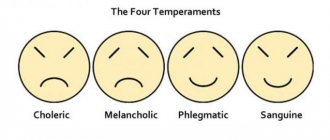Pattern is a term that denotes a repeating pattern; it can also be called a sample, model, diagram or image. The concept comes from the English “pattern” and is translated, as an example, form. Thanks to the pattern, a mediating representation is created, with the help of which, in the mode of synchronicity of the processes of perception and thinking, patterns appear, as well as the way they exist in the surrounding world, nature, and society.
A pattern is a repeating pattern or template whose components repeat in a predictable manner. Patterns may be perceived differently, depending on the sensory organ with which they are felt.
There are various patterns of behavior. Examples of them can be seen in various areas of life: from early washing to special professional ones.
Meaning of the word pattern
To understand how capacious this word is, let’s look in the dictionary to clarify the translation. So what do we see? The English word pattern is translated into our native language as:
- model or template;
- sample or example;
- drawing or pattern;
- system or structure.
That's how many meanings this concept has! There are patterns in programming, in psychology, in design and, finally, in nature itself. This is where we will now look for patterns.
Pattern what is it
The concept of pattern has a wide range of applications. For example, it is found in sciences such as psychology, physics, computer science, and is also often used in design, music, and creativity. This pattern of behavior is reproduced by a person automatically in the process of interaction with the outside world. Daily patterns of behavior are examples: morning washing, greetings, table manners, way of answering calls.
In psychology, a pattern is a paradigm of behavior characteristic of a person in certain situations and circumstances.
In science, particularly in mathematics and linguistics, patterns can be identified through exploration. Direct observation can reveal how visual patterns are formed in art and nature. In nature, they are most often chaotic, fractal and incapable of copying each other, found in the form of spirals, waves, foam or cracks, and created using the phenomenon of symmetry and reflection.
Such patterns involve a mathematically delineated structure expressed through formulas. Mathematics itself is a way of searching for regularities, and each final product from the use of functions is a mathematical pattern.
The process of research and prediction by scientific theories of simultaneously existing regularities in nature and society is a process of identifying patterns.
In architecture, design, and art, scenery and a variety of visual elements may be combined and repeated to create images and patterns to achieve a certain lasting impact. Design patterns in computer science are a commonly used solution to a wide range of programming problems.
In medical sciences, a pattern is perceived as a stable combination of research results or other signs, symptoms with similar complaints of a patient or patients with the same nosology. Thus, a pattern consists of several symptoms and signs. The syndrome, in turn, includes one or a pair of patterns. A syndrome or several syndromes constitute a disease.
Patterns have characteristic properties: they are a constant category that is easy to define. They repeat themselves all the time; are unconsciously created algorithms that are usually very difficult to correct. They can manifest themselves fully or partially. If it is partially detected, then it is called a code. For example, a person heard an excerpt from a song, and pictures from a certain impressive situation from the past are immediately displayed before his eyes, he is captured by the emotions and memories associated with it. Thus, the melody was a code, the pronunciation of which triggered the entire pattern.
The innate pattern is the starting point, the initial template upon which others are layered. Such combinations of patterns combine with a person's stereotypes, habits and values, forming his character and lifestyle. Therefore, such patterns always interact and cannot exist separately.
A person is constantly developing, gaining experience, knowledge, and self-improvement. And along with the development of personality, a transformation of its patterns occurs, they improve or change the form of expression. One can demonstrate an example of such a modification in the experience of a man who is accustomed to living a single life, but realizing that he needs to change this lifestyle and start a family, still continues to express some behavioral patterns. Certain habits retained from bachelor life can haunt a person for some time. For example, the desire to have your own independent personal space, and to spend time alone or with friends, with which, for example, the wife may not agree. Over time, this may pass, the effect of this pattern will weaken, and the man will get used to the fact that he is now single and must devote himself more to his family.
Natural patterns
Nature is full of various harmonious systems, ordered structures, diverse and at the same time endlessly repeating patterns. It has everything - order and disorder. Now we are interested in order or all kinds of natural structural formations. You may be surprised to learn that natural patterns are waves in the seas and oceans, dunes in the sand, bubbles in soap suds, spirals harmoniously twisted in shellfish shells or beautiful snowflakes. Moreover, each snowflake is unique and inimitable, and inside it consists of repeating symmetrical patterns.
And if we look at plants or trees, then, again, we will see in them countless repetitions of the same forms. Such natural patterns are also called fractal-like patterns. The latter include mountains, coastlines, patterns on animal skins, geological faults, etc.
Patterns in psychology
A psychological pattern is a stable pattern of behavior in living individuals. Take a closer look at the people around you, you will see that they all behave differently in different situations, but each of them adheres to their own, so to speak, style. Once you understand some patterns, it will be easier for you to communicate with people. You will not expect from them what they cannot give, and vice versa.
For example, you notice that your friend has a conservative approach to life. He does not like any changes or surprises, he is pedantic and picky. You decide to give him some unusual creative gift for his birthday - this is a bad idea because it goes against his worldview. His model of behavior in such a situation is dissatisfaction and irritation. Dozens and hundreds of similar examples can be given. Pay closer attention to people's behavior patterns - this is a very useful activity!
In psychology there is also such a thing as hypnotic patterns. These are special repeated verbal expressions that help put a person into a hypnotic trance. Moreover, often the person himself will not even guess about it. Such techniques are often used in NLP. Manipulative people are good at such techniques. Milton Erickson is considered to be the inventor of hypnotic patterns.
Pattern is...
The word “pattern” is of English origin and translated into Russian means “form”, “template”, “example”.
That is, a pattern is a kind of repeating pattern, the elements of which are also patterns and are in predictable interaction.
An example from life: every morning you perform the same behavioral pattern - exercise, which includes the toilet, shower, brushing your teeth, combing your hair, and for women, also makeup.
You repeat these actions every day, so they become automatic and require no mental effort. They are like a pattern, a pattern, a pattern according to which you act.
In a broad sense, all our life activities are permeated with patterns: they surround us literally everywhere.
This term is used in psychology, mathematics, art, design and other fields.
You can recognize the pattern by the following signs:
- It is distinguished by its consistency - for example, most Russian people have a New Year's pattern : a decorated Christmas tree, a laid table and the release of fireworks immediately after the chimes.
No one even thinks about why we do all this, is it possible to do something differently (for example, buy not a spruce, but a palm tree)? This is a habit passed down from generation to generation, and few people dare to break this tradition; - It is constantly repeated - “Every year on December 31, the men and I go to the bathhouse” (from the film “The Irony of Fate, or Enjoy Your Bath”);
- It is formed unconsciously (the New Year's pattern described above. We simply began to repeat after our parents what they did from year to year);
- It is difficult to correct, as it is a stable phenomenon. Those who have at least once decided to change something in their lives, for example, quit smoking or start running in the morning, know this very well.
Patterns in architecture and design
Everything is simple here. Look at any building and you will see repeating architectural elements that were designed by the designer. Of course, it is better to look at ancient mansions, which are abundantly decorated with beautiful stucco moldings, columns and other architectural delights. However, you can also look at an ordinary apartment building, because windows, balconies and loggias are also architectural patterns. Here's another good example: a design pattern is a pattern on wallpaper, fabric or linoleum.
When we go to some sites on the Internet, we see that they have a background that consists of some repeating motifs. These can be floral or geometric patterns, patterns based on the textures of fabric, wood, metal - whatever! Such background patterns are precisely the work of designers. Moreover, in order to learn how to make cute seamless backgrounds, you don’t have to graduate from an art school or college. This is an art that any computer user can do.
How to make a pattern
In order to create a pattern yourself, you will first need to install one of the graphic editors on your computer. CorelDrow or Photoshop are ideal. With the help of these programs, even a beginner, having acquired certain skills, will be able to create almost professional seamless backgrounds. You can also make a pattern in Illustrator.
The entire process of creating a drawing can be completed in 6-7 consecutive steps. In order to master this art, we recommend studying one of the lessons on creating seamless backgrounds that are available on the Internet. At first, it is better not to pursue complexity, but to prefer simple compositions consisting of elementary geometric shapes: circles, squares, triangles, etc.
Psychological theories and schools
The most in-depth study of the importance of patterns in people's lives was carried out by the American professor of social psychology, Dr. Walter Mischel.
Walter Michel's theory
According to the scientific theory of this specialist, every baby at the time of birth already has basic behavioral patterns. This information is inherited by the newborn along with genes from the parents. As a child grows up, his innate behavior algorithms are superimposed by acquired habits, stereotypes and patterns dictated by society. The quality of education plays an important role in the formation of new patterns of action in life situations.
All of the above factors form the basis of a person’s character in the future. The child's psyche is a very flexible structure. From early childhood, the prerequisites begin to be laid for the formation of basic patterns that remain in the consciousness of every person throughout his adult life.
If, while raising a child, parents closely monitor his behavioral habits, then they can promptly remove negative patterns from the life of their daughter or son. To support his theory, Dr. Walter Mischel developed the “marshmallow test.”
The Marshmallow Experiment, also known as the marshmallow test, is conducted for children aged 4 to 6 years. The size of the group ranges from 5 to 15 children.
Dr. Walter Mischel conducted a psychological pattern study that looks like this:
- Each child is taken one by one into an empty room with only a chair and a table.
- There is a plate with 1 marshmallow on the table.
- The leader of the experiment tells the child that if within 15 minutes. If he resists not to eat this delicacy, he will receive 2 marshmallows as a reward.
- The person conducting the test leaves the room, leaving the child alone with the sweets.
The results of this experiment, dedicated to the study of patterns, are such that 20% of children were able to last 15 minutes without eating a marshmallow. The rest of the test participants consumed the confectionery product within the first minutes. The social psychology experiment did not end there.
Walter Mischel observed the lives of an entire group of children at different stages of their personality development. It turned out that the participants in the experiment who refrained from eating sweets, having received a reward of 2 marshmallows for this, achieved much more in life than other children.
With this study, Dr. Walter Mischel showed that a sufficiently developed pattern of self-control allows a person to withstand temptation, life's trials, show willpower and perseverance in order to ultimately get much more. People with a similar behavioral pattern have strategic planning skills and reject the philosophy of living today.
Parents who want to develop a pattern of self-control in their child should teach him order and discipline from early childhood. For example, regularly brush your teeth in the morning and evening, talking about the importance of oral hygiene. After completing the game, the child must independently collect the toys, placing them in a pre-prepared box.
Sequential Pattern Repetition Theory
Of particular interest is the theory of sequential repetition of patterns at different stages of an individual’s life. There is a natural feature that knowing how a person behaved previously in certain situations, one can identify his main behavioral patterns with maximum accuracy.
Before drawing appropriate conclusions, psychologists recommend carefully studying the individual’s personality. The simplest example is that if a friend easily makes various promises to others, but almost never fulfills them, then you can be sure that such behavior is the norm for this person.
Similar situations arise with people who borrow money, but constantly ask for the next postponement of the loan repayment period. Patterns developed in childhood are practically impossible to correct. There is a psychological theory for predicting the quality of personal relationships between future spouses.
A woman who is getting married should pay attention to how her beloved man treats his mother. 2-3 years after marriage, the stage of falling in love is completely completed. At this stage, the behavioral algorithms that the man has formed in relation to his own mother are activated.
Theory of the pattern implementation mechanism
There is another interesting psychological theory that concerns the mechanism for implementing patterns. It is believed that most people choose partners with similar behavior patterns for close communication and pleasant pastime.
This choice is made at the subconscious level. This explains the pattern when the same girl constantly finds boyfriends with a reputation for scoundrels. In fact, there is a choice of a loved one whose personal qualities best suit the realization of the girl’s own patterns.
Similar situations occur with men who are always looking for their only and faithful life partner, but focus their attention on girls with a dubious reputation. After another unsuccessful relationship, the guy is sure that the next lover will not be the same as the previous ones, but again chooses a girl with negative patterns. This is due to the fact that the behavioral patterns of loved ones are a mirror image of their positive and negative patterns.
Patterns are behavioral models pre-formed by the human brain, the implementation of which occurs in compliance with a strict algorithm of actions. There are negative and positive psychological schemes.
Patterns that have formed in the mind of an individual based on negative practical experience are destructive in nature, reducing a person’s quality of life. Positive patterns are a mechanism for interaction of the individual with the outside world and representatives of society.










